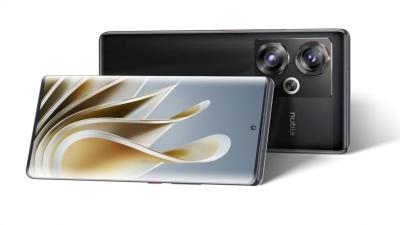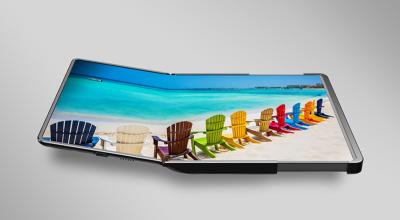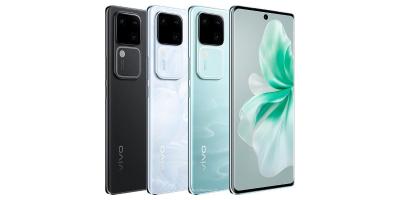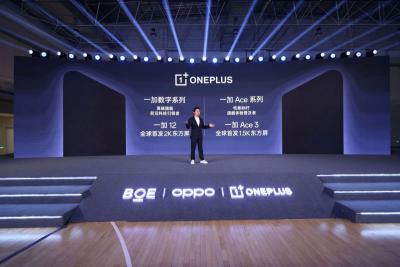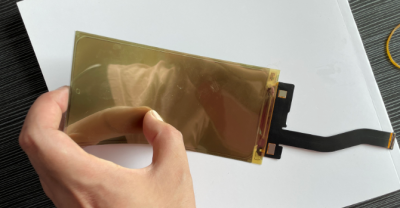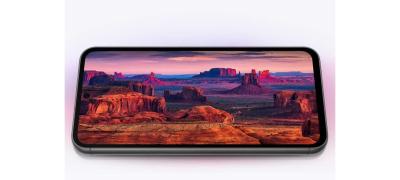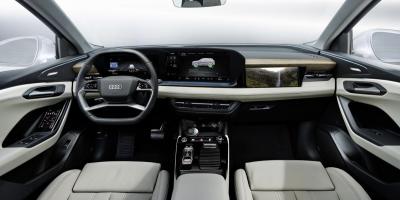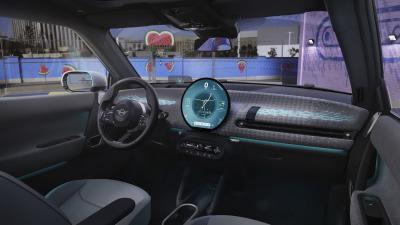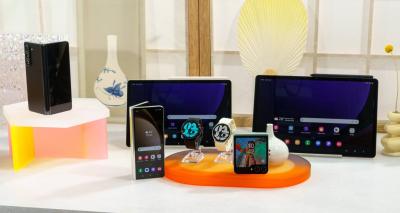OLED displays use organic materials that emit light when electricity is applied. OLEDs enable emissive, bright, thin, flexible and efficient displays - and so OLEDs are set to replace LCDs in all display applications - from small displays to large TV sets.
An AMOLED display is an OLED display that is driven by an active matrix backplane, it is a type of OLED display that can achieve high performance. Most OLED displays such as the ones used in TVs and smartphones are actually AMOLED displays.
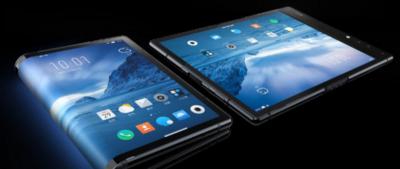
What does AMOLED mean?
The term AMOLED means Active-Matrix OLED. The 'active-matrix' part refers to the driving electronics, or the TFT layer. When you display an image, you actually display it line by line (sequentially) as you can only change one line at a time. An AMOLED uses a TFT which contains a storage capacitor which maintains the line pixel states, and so enables large size (and large resolution) displays.
AMOLEDs today
AMOLED displays today are used in many applications - and are most common in smartphones. Most smartphones today use AMOLED displays - including the latest Samsung phones, all of Apple's iPhones models and more.
AMOLED displays are also used in OLED TVs, many wearables (such as the Apple Watch), tablets, laptops, VR headsets, monitors, and more.
AMOLED vs PMOLED
A PMOLED uses a simpler kind of driver electronics - without a storage capacitor. This means that each line is turned off when you move to the next line. So let's say you have 10 rows in your display - each row will only be on 1/10 of the time. The brightness of each row has to be 10 times the brightness you'd get in an AMOLED. So you use more voltage which shortens the lifetime of the OLED materials and also results in a less efficient display. So while PMOLEDs are cheaper to make than AMOLEDs they are limited in size and resolution (the largest PMOLED is only 5", and most of them are around 1" to 3"). Most PMOLEDs are used for character display, and not to show photos or videos.
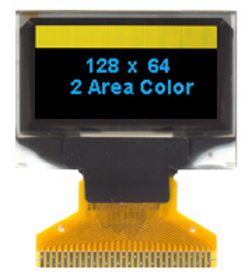
Flexible, foldable and rollable AMOLEDs
One of the main advantages of AMOLED displays is that they can be made flexible. Flexible AMOLEDs are already popular for many years in smartphones and wearables, and in 2019 we will experience the first foldable devices and rollable screens.
Looking to buy AMOLED displays?
Are you looking to buy AMOLED display for your project? AMOLEDs on the market range from small 1-inch ones for smartwatches through large OLEDs used in tablets and laptops - to large TV panels, up to 97" in size. Visit our OLED Marketplace, the world's most comprehensive OLED catalog, where you can browse the available panels, and let us help you find the best AMOLED supplier for your needs!
Further reading
The latest AMOLED news:
Demand for Samsung's rigid smartphone AMOLED panel is on the increase in China
According to reports in China, strong demand for flexible AMOLED panels for high-end smartphones, have resulted in an increase of panel price. This has caused smartphone makers to adopt more rigid AMOLED panels in their budget smartphones.
The report suggests that Samsung Display is especially enjoying an increase in sales of its rigid AMOLED panels to smartphone makers in China - mainly OPPO, vivo, and Xiaomi. These smartphone makers are replacing LCD displays with Samsung's rigid AMOLEDs - as the price difference is currently quite small.
Nio announces its latest flagship sedan EV, the ET9, with two AMOLED displays
China's EV car producer Nio announced its latest flagship executive electric sedan, the ET9. The car adopts several new technologies, in areas such as self-driving, sensing, first-class airline seats (it has a four-seat configuration) and more. Nio will ship the first ET9 cars in the first quarter of 2025.
According to reports, the ET9 has two AMOLED displays. The main multimedia front-seat display is a 15.6" AMOLED display. For the passengers, there's a central 14.5" AMOLED display (between the two seats, see image above). We do not have more details on these OLED displays yet.
Visionox produced its first ViP AMOLED display, is progressing towards mass production
Visionox announced that it has produced the first mass-production sample ViP AMOLED display. The company aims to start mass producing small and medium-sized ViP AMOLED soon, and later apply the technology for large-area panels as well.
The company did not detail when it expects to start actual mass production. It did update that it has already applied for over 500 patents regarding to ViP technology, over 13 different technical fields. The company also says it is in talks with several key customers to define its production process and final display capabilities.
Reports from China suggest that Apple cancelled its BOE iPhone AMOLED orders due to quality issues
Last month we reported that BOE finally got accepted into Apple's latest-generation iPhone supply chain, and the company will supply 2 million AMOLED displays for iPhone 15 devices in 2023 (that's about 3% of Apple's total iPhone orders). This news came after many years when BOE failed to meet Apple's quality tests.
A new report from China now suggest that BOE's AMOLED displays have been found to still suffer from issues - specifically light leakage around the selfie-camera and sensor 'island'. Eventually Apple decided to cancel its orders from BOE this year, at least until the China-based display maker can fix the issue.
DisplayMate tests BOE's X1 AMOLED display used in the OnePlus 12, gives it excellent marks
Our friends at DisplayMate posted an in-depth technical review of BOE's new X1 AMOLED display used in the upcoming OnePlus 12 smartphone. The OnePlus 12 hasn't officially launched, but we know it uses a 6.8" 3168x1440 2600 nits LTPO AMOLED display. The display has several novel technologies, including BOE's new-generation LTPO backplane, and the new Oppo P1 display chip that features high-precision pixel calibration algorithms that ensure high brightness, high image quality - reduced power consumption (by 13%, according to OnePlus).
Based on DisplayMate's extensive lab tests and measurements the OnePlus 12 delivers excellent display performance - and has earned the company's highest overall display assessment rating and highest display performance grade of A+. The display matches or breaks 18 different display quality records. some of these display records records include the highest peak display brightess (it reaches 2,675 nits for Low APL), the lowest screen reflectance (4%), the highestabsolute color accuracy (visually indistinguishable from perfect), and the largest native color gamut.
The OLED Marketplace now lists a Tianma 6.78" 1080x2400 smartphone flexible AMOLED display
The OLED Marketplace is now listing a new display, a flexible 6.78" 1080x2400 smartphone display, produced by Tianma.
If you are interested in this display for your device or new project, contact us now, or check out more information over at the OLED Marketplace. It is available in sample quantities, and in large volume orders.
Samsung Display files another complaint in the US trade comission against BOE
Samsung Display filed a new complaint in the US trade commission (ITC) against BOE, claiming that the Chinese OLED producer is infringing on SDC's OLED patents and IP, and is using unfair methods of competition.
In January 2023 Samsung filed a motion with the US ITC to halt the import of aftermarket AMOLED displays produced by BOE. A group of OLED makers in China, which includes BOE, answered with a motion of their own, to dismiss an SDC AMOLED patent. This legal battle continues, and the tension between Samsung and BOE is on the rise.
Audi's 2024 Q6 e-tron to sport a main AMOLED display
Audi unveiled the interior design of it upcoming 2024 Q6 e-tron EV SUV. The car will have three displays: A main 14.5" multimedia display, a 11.9" virtual instrument cluster and a 10.9" passenger display. There are conflicting reports, but it seems that at least one of these displays will be an OLED (and maybe all of them, we do not know yet).
The Q6 e-tron will also feature Audi's second-gen OLED taillight technology, that use a total of 360 individual OLED panels built into 6 different lighting panels (The OLEDs are likely produced by OLEDWorks, like all of Audi's recent OLED panels.
The Mini Cooper 2025 to sport a round 9.4-inch AMOLED display produced by Samsung
MIni Cooper unveiled the interior design of its upcoming 2025 model, with a large round OLED display (this same display was shown a year ago in a Mini concept car design).
The display is 9.4" in size, and is produced by Samsung Display. Mini Cooper developed its own unique software, called Mini Operating System 9, complete with several experience modes that control the complete interface and Mini's new personal assistant dog called Spike.
Samsung announces new foldable phones, tablets and smartwatches, all based on AMOLED displays
Samsung announced several new devices today, all utilizing AMOLED displays. We'll start with the two new foldable phones, the Galaxy Z Fold5 and Z Flip5. The Fold5 offers a foldable 7.6" 120Hz 1812x2176 foldable AMOLED display, and a 6.2" 120Hz 904x2316 cover AMOLED. The phone has a Snapdragon 8 Gen 2 chipset, 12 GB of RAM, up to 1TB of storage and a triple camera setup.
Samsung's Galaxy Z Flip5 smartphone offers a foldable 6.7" 120Hz 1080x2640 foldable AMOLED display, and a small 3.4" 720x748 cover Super AMOLED display. The phone has a Snapdragon 8 Gen 2 chipset, 8 GB of RAM, up to 512GB of storage and a dual camera setup.
Pagination
- Previous page
- Page 2
- Next page
